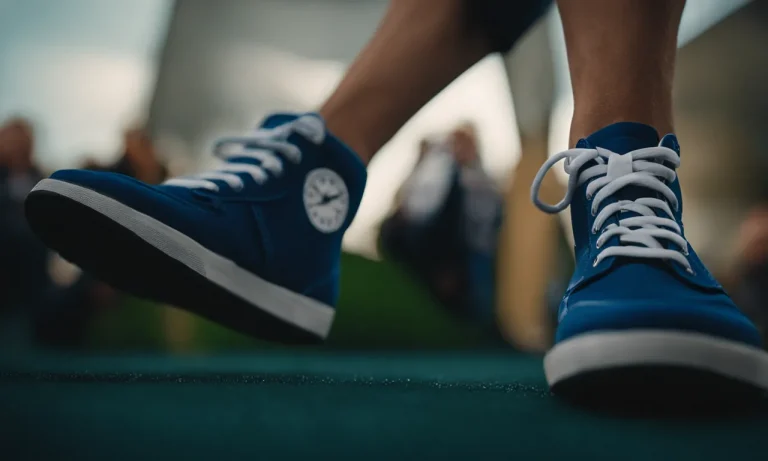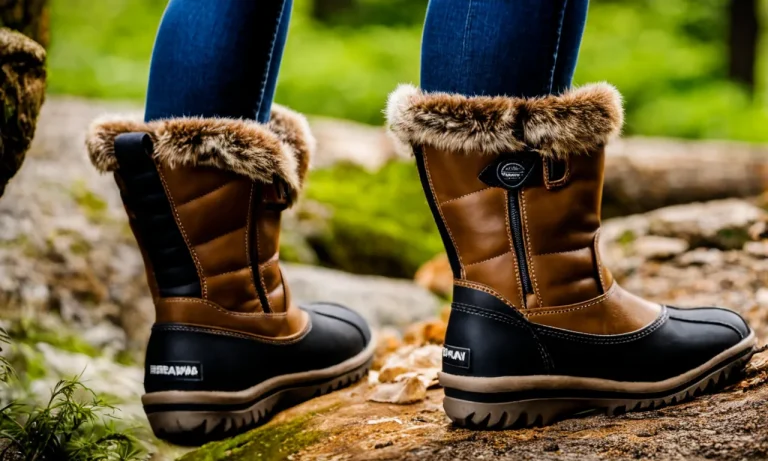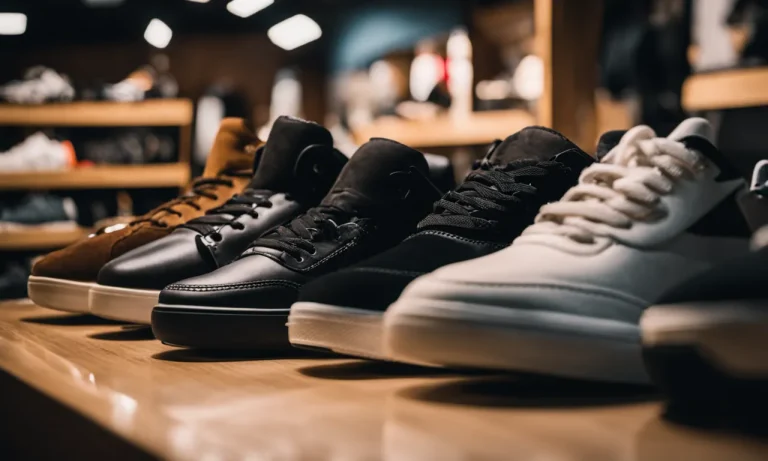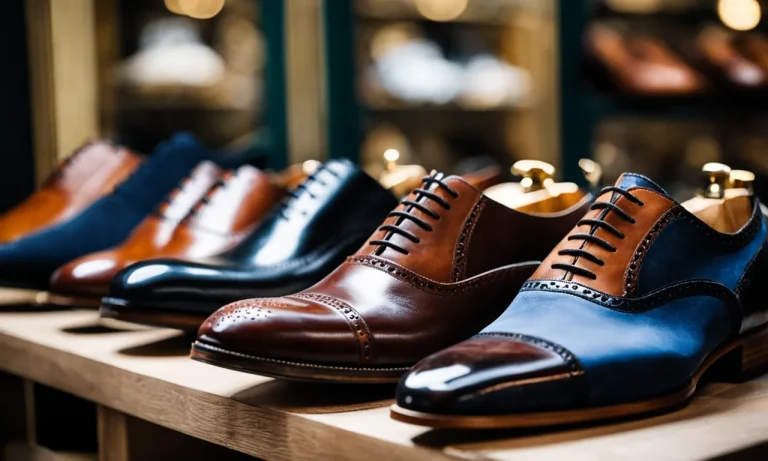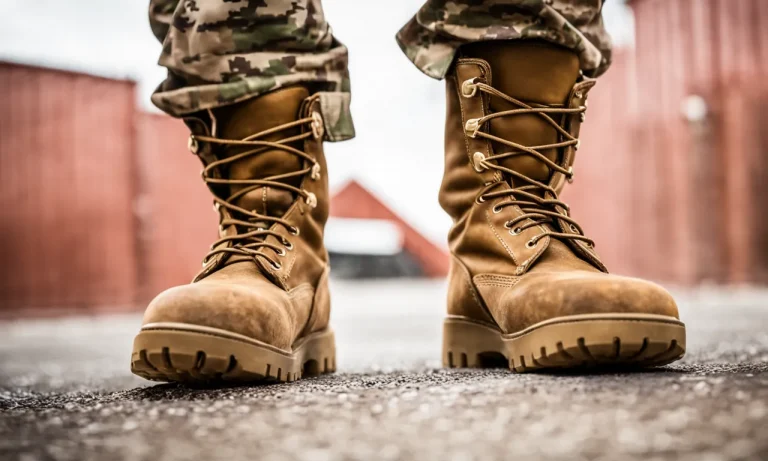Having shoes that are slightly too large can be annoying. The shoes slip around on your feet, causing blisters and making it difficult to walk properly. But before you give up on those shoes, there are some simple tricks you can try to make them fit better.
If you’re short on time, here’s a quick answer to your question: Try tongue pads, heel grips, and lacing techniques like the runner’s loop to take up excess room in shoes that are slightly too big.
In this comprehensive guide, we’ll discuss why you may have shoes that don’t fit perfectly, and provide solutions to make your slightly too large shoes more comfortable and functional.
Why Your Shoes Might Be Slightly Too Big
There are several reasons why your shoes might be slightly too big. Understanding these reasons can help you find the right solution to deal with this common footwear issue.
Sizing Issues
One of the main reasons why your shoes might be slightly too big is due to sizing issues. Shoe sizes can vary between brands and even within the same brand. This means that a size 8 in one brand might fit differently than a size 8 in another brand.
It’s important to remember that shoe sizes are not always standardized, so it’s essential to try on shoes before purchasing them.
Inconsistent sizing can also occur within the same brand. This can be frustrating when you find that the same size shoe you have purchased in the past no longer fits properly. Keep in mind that manufacturers may change their sizing methods or materials used, resulting in variations in fit.
It’s always a good idea to try on shoes and check the fit before making a purchase.
Feet Change Size
Another reason why your shoes might be slightly too big is because your feet can change size over time. Factors such as weight gain or loss, pregnancy, and aging can all affect the size and shape of your feet. It’s not uncommon for adults to experience changes in shoe size as they get older.
Therefore, it’s important to regularly measure your feet and reassess your shoe size to ensure a proper fit.
Inconsistent Sizing Between Brands
Inconsistent sizing between brands is another factor that can contribute to shoes being slightly too big. Different brands have different sizing charts, which can make it challenging to find the right fit. One brand’s size 9 might fit more like a size 8.5 in another brand.
This inconsistency can make online shopping particularly tricky, as you don’t have the opportunity to try on the shoes before purchasing.
When dealing with shoes that are slightly too big, it’s important to consider these factors. Remember to try on shoes before buying, regularly measure your feet, and be aware of the inconsistencies between brands.
Taking these steps will help ensure that you find the right fit and avoid the discomfort of wearing shoes that are too big.
Tips for Making Slightly Large Shoes Fit Better
Try Tongue Pads
If you find that your shoes are slightly too big, one solution is to try using tongue pads. These small, cushioned pads can be inserted underneath the tongue of the shoe to add extra padding and help fill in any extra space.
Tongue pads are easily available online or at shoe stores and can make a noticeable difference in the fit of your shoes.
Use Heel Grips
Another option to improve the fit of your slightly large shoes is to use heel grips. These adhesive pads are placed at the back of the shoe, near the heel, to prevent your foot from sliding forward. Heel grips can help prevent blisters and provide a more secure fit, making your shoes feel more comfortable.
Lace Techniques Like the Runner’s Loop
If you’re dealing with shoes that are slightly too big, using different lacing techniques can also help improve the fit. One popular method is the runner’s loop, where the laces are looped back into the top eyelets of the shoe before being tied.
This creates additional tension and helps to secure your foot in place, reducing any excess space.
Wear Thicker Socks
Another simple trick to make slightly large shoes fit better is to wear thicker socks. Thicker socks can add some extra cushioning and fill in the gaps in the shoe, making them feel more snug. Consider investing in a few pairs of thicker socks specifically for wearing with your larger shoes.
Consider Insoles
If none of the previous methods work, you may want to consider using insoles. Insoles can provide extra support and cushioning, as well as fill in any gaps in the shoe. There are various types of insoles available, from gel to foam, so you can choose the one that best suits your needs.
Use Moleskin or Tape
If you’re in a pinch and don’t have access to any of the above solutions, you can try using moleskin or tape to make your shoes fit better. Simply place a small piece of moleskin or tape on the inside of the shoe where it feels loose.
This can help provide some additional padding and fill in any extra space, improving the fit.
Remember, these tips are meant for slightly large shoes and may not work for shoes that are significantly too big. If you’re dealing with shoes that are extremely oversized, it’s best to consult a professional or consider exchanging them for the correct size.
When to Give Up and Size Down
Having a pair of shoes that are slightly too big can be a frustrating experience. Not only do they make it difficult to walk comfortably, but they can also cause blisters and foot pain. While there are various techniques to make larger shoes fit better, sometimes it’s best to give up and size down.
Here are a few scenarios where sizing down might be the best option:
Too Much Excess Room
If your shoes have a significant amount of excess room, even with thick socks or insoles, it might be time to consider sizing down. When there is too much space between your foot and the shoe, it can lead to instability and discomfort.
Your foot may slide around inside the shoe, making it difficult to walk or run with confidence. In this case, opting for a smaller size will ensure a snug and secure fit.
Heel Slips Out Constantly
If you find that your heel constantly slips out of the shoe, it’s a clear indication that the shoes are too big. This can be particularly annoying and even dangerous, as it increases the risk of tripping or twisting your ankle.
While heel grips or inserts can provide temporary relief, they may not be a long-term solution. Sizing down to a smaller size will help eliminate this problem and provide a more secure fit for your foot.
Foot Pain or Blisters
One of the most common signs that your shoes are too big is experiencing foot pain or developing blisters. When your feet move excessively inside the shoe due to a loose fit, it can lead to friction and pressure points, causing discomfort and painful blisters.
If you find yourself constantly dealing with foot pain or blisters, it’s a good idea to try a smaller size to ensure a better fit and prevent further issues.
Remember, finding the right shoe size is crucial for both comfort and foot health. If you’re unsure about whether to size down, consult a professional shoe fitter or podiatrist who can provide expert advice tailored to your specific needs.
Buying Shoes in the Correct Size
When it comes to finding the perfect pair of shoes, size matters. Wearing shoes that are slightly too big can be uncomfortable and may cause blisters or foot pain. To avoid these issues, here are some tips for buying shoes in the correct size.
Get Professionally Fitted
One of the best ways to ensure you are getting the right size is to get professionally fitted at a shoe store. Trained staff can measure your feet accurately and recommend the appropriate shoe size and width for you.
They will take into account factors such as arch height, foot shape, and any specific foot conditions you may have. Don’t be shy to ask for assistance – it’s their job to help you find the perfect fit!
Shop at the End of the Day
Did you know that our feet tend to swell throughout the day? That’s why it’s recommended to go shoe shopping in the late afternoon or evening. By this time, your feet will be at their largest size, allowing you to find a pair of shoes that will fit comfortably throughout the day.
Remember, it’s better to have shoes that are slightly too big than too small.
Try Both Shoes On
When trying on shoes, it’s essential to try on both the left and right shoe. This may seem obvious, but sometimes, our feet are slightly different in size. By trying on both shoes, you can ensure that both feet are comfortable and properly supported.
Additionally, don’t forget to walk around in the shoes to see how they feel in motion.
Know Your Size in Different Brands
Shoe sizes can vary slightly between different brands and styles. Just because you are a size 9 in one brand doesn’t mean you will be the same size in another. It’s a good idea to familiarize yourself with the sizing charts and measurements provided by different shoe brands.
Some websites, like www.shoesizeconversionchart.net, offer comprehensive shoe size conversion charts that can help you find the right fit across various brands.
Remember, finding the correct shoe size is crucial for your comfort and foot health. By following these tips and seeking professional assistance when needed, you can avoid the hassle of dealing with shoes that are slightly too big.
Conclusion
Having shoes that are a little too big can be annoying, but minor fit issues like these can often be fixed with some simple adjustments. Use tongue pads, heel grips, lacing techniques and insoles to take up excess room before deciding to size down.
If your shoes are slipping constantly or causing pain, it may be time to get a smaller pair. When shopping for new shoes, get properly fitted at the end of the day and try on both shoes to find your ideal size.


